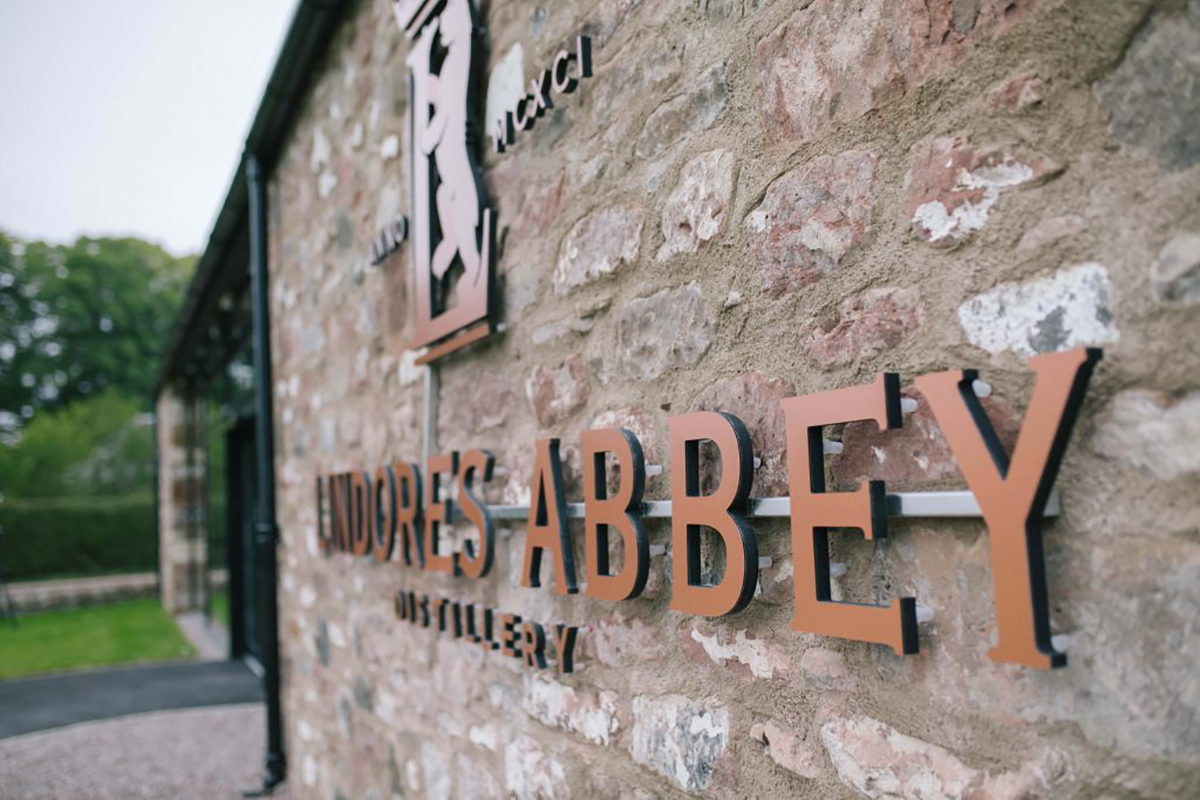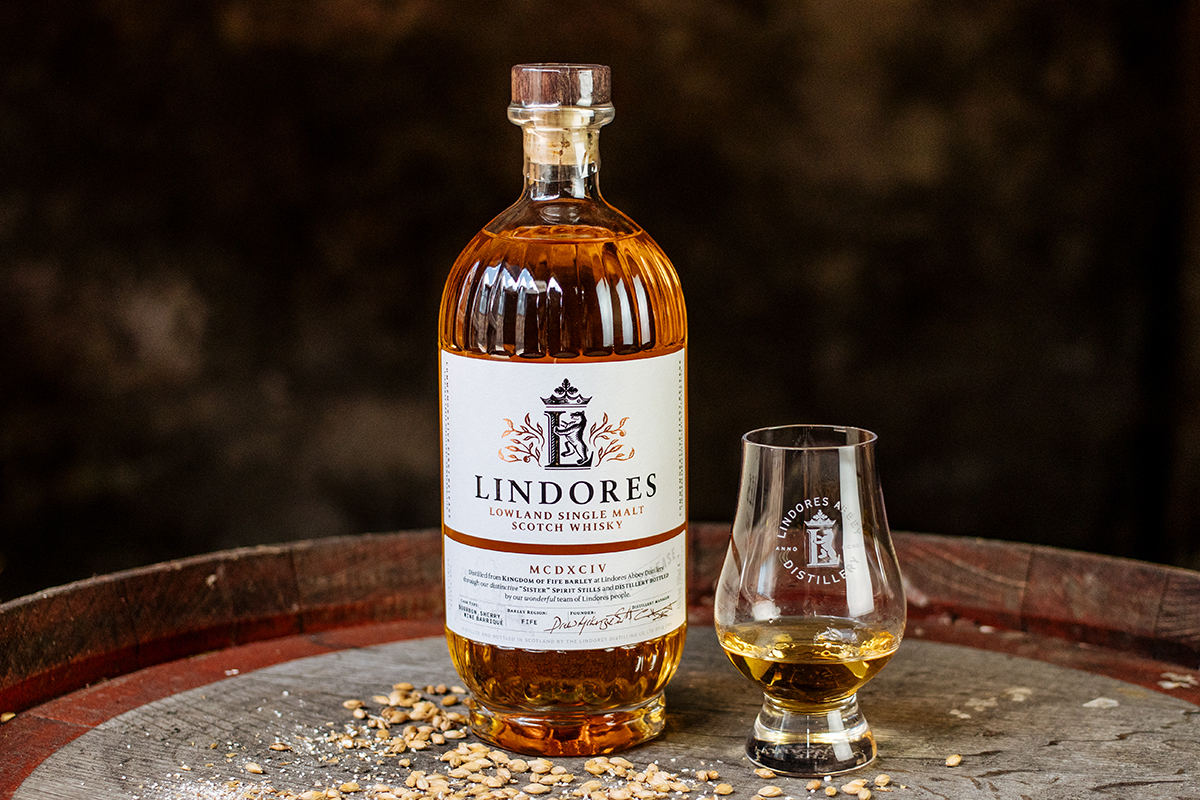At first glance, Newburgh is an unassuming town in the county of Fife, Scotland. The downtown doesn’t have many distinguishing features; there are a few pubs, a pharmacy, a café, and you can get Chinese takeout. Its population of just over 2,000 has been mostly steady for over a century. And yet, Newburgh should be of particular interest to any Scotch whisky drinker. It is the birthplace of Scotch whisky, after all.
Lindores Abbey, or “Church by the Water”, is situated on the outskirts of Newburgh. The abbey was founded in 1191 by David Earl of Huntingdon on land overlooking the Estuary of the River Tay. It was once an important and wealthy place, welcoming kings and queens. William Wallace, a national hero and leader of the Scottish resistance forces during the First War of Scottish Independence, once took refuge at Lindores Abbey with 300 of his men.
History of Lindores Abbey
Most of the monks that resided at Lindores Abbey over the centuries have been forgotten. But one name still reverberates in the history of Scotland and the production of its national tipple. In the Exchequer Rolls of 1494, it reads, “And by payment made to Brother John Cor by precept of the comptroller, as he asserts, by the King’s command, to make aqua vite within the period of the account, 8 bolls of malt.”
This entry is widely recognized as the first written evidence of the production of aqua vitae, or water of life, a predecessor of whisky. Eight bolls amounts to roughly 500 kilograms, which would’ve been enough to distill 350 liters of spirit. Even though it doesn’t say where he was doing his distilling, John Cor was a Tironensian monk at Lindores Abbey, so it seems to be as likely a place as any. In 2018, the uncovering of two pits which shared characteristics with traditional kiln stills, were found to be a further indication of distillation at the abbey in the 16th century—or earlier.
Not much of Lindores Abbey is left now; it ceased operation in 1559. But the abbey ruins and surrounding garden are a nice and tranquil area still, especially during spring and summer. But now there’s another very good reason for Scotch whisky enthusiasts to make the pilgrimage to Newburgh.

Lindores Abbey Distillery / Photo Credit: Lindores Abbey
Lindores Abbey Distillery
In recent years, the county of Fife has seen a number of new distilleries hatch, including Daftmill, Kingsbarns and Inchdairnie. The most historically significant is undoubtedly Lindores Abbey Distillery. Owners Drew and Helen McKenzie Smith embarked on a multimillion-dollar adventure just over five years ago. Farm buildings next to the original site of Lindores Abbey were raised and rebuilt into modern versions with traditional features. Eventually, on December 13th 2017, Lindores Abbey Distillery started its first distillation.
It is a modern operation with a visitor center, shop, bar and refectory. In just a short period, Lindores Abbey Distillery has become a popular wedding destination too. But at the heart is its whisky facility, with most aspects of production located in one area—the stills, washbacks and mash tun—as is common in new distilleries. At full capacity, Lindores Abbey Distillery can produce over a quarter million liters of alcohol per annum. Running the show is distillery manager Gary Haggart.
“The history of Lindores is always there and without a doubt there is a weight of expectation and pressure on our shoulders, but I have always enjoyed working under a little pressure,” says Haggart. “It tends to bring out the best in me and that little competitive edge has probably rubbed off onto the distilling team as well. They all know the goal and that is to make the best single malt scotch whisky that we can.”
Botanical Spirit
Part of the responsibility of Lindores Abbey Distillery goes beyond honoring its history with quality whisky. It is about sharing and educating about the past and present. Part of that approach are its informative distillery tours, but also its Aqua Vitae. Where many new distilleries produce gin or vodka to tide them over until the whisky is old enough, Lindores Abbey Distillery has recreated this historic precursor to whisky—once made next door at the abbey—using malt spirit combined with spices, dried fruit and local green herbs.
“I think the history has been captured perfectly with our Aqua Vitae,” says Haggart. “We have tried to tell the history of the abbey with that expression of our spirit. I am not sure how easy it would be to do that with a single malt, after all it’s only three ingredients. What I do think we have done is to try and keep traditional. It’s about trying to maintain a high level of quality, using wooden washbacks, long fermentations, slow distillation, the best quality casks and showcasing that we are not a museum. We are a serious business, with serious intent to make a worthy single malt.”

Lindores Abbey Whisky / Photo Credit: Lindores Abbey
While located in the Lowlands, Haggart isn’t striving for the typical floral, light style the region is known for. Long fermentations of up to 114 hours have a huge impact on the flavor profile, and by capturing just a hint of the feints he wants to add some funk into the Lindores spirit, “…so the cask has some work to do, while it also makes that aging spirit just a little more interesting,” he says. He describes the spirit currently maturing in the warehouses as very fruit-driven (red fruits), with an apple and spice background and a malty finish.
Casks Slumbering
While the first whisky is coming of age at the end of 2020, there’s no guarantee that the first Lindores whisky in five centuries will hit the market at that point. “The first release will be for our 1494 members,” says Haggart. “They have the exclusive rights to the first ever bottling of Lindores Single Malt Scotch Whisky. We will have to wait and see when it will be released. If she is ready on her third birthday, maybe we will do something. I think in the early years it will be about finding our place and then as the spirit accelerates through its years of maturation and finds its home with the consumer, that’s the time to really bring the full repertoire out of what we have sitting in the warehouse—the casks that only myself and a select few know that are there!”
Ready to try some historic Lindores Abbey Aqua Vitae?
With Distiller, you’ll always know what’s in the bottle before you spend a cent. Rate, Review, and Discover spirits. Head on over to Distiller, or download the app for iOS and Android today!
Want to enjoy Distiller ad-free? Join Distiller Pro today to support the Distiller platform and keep ads off of your screen.

